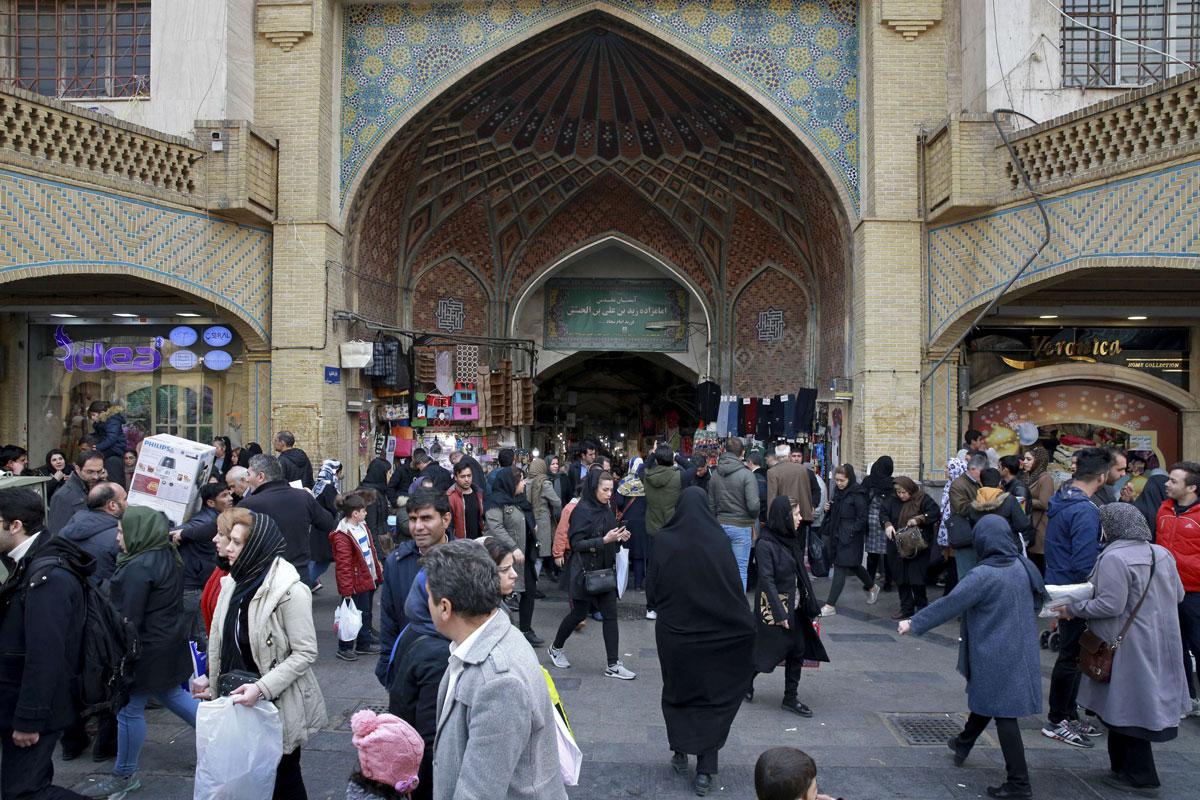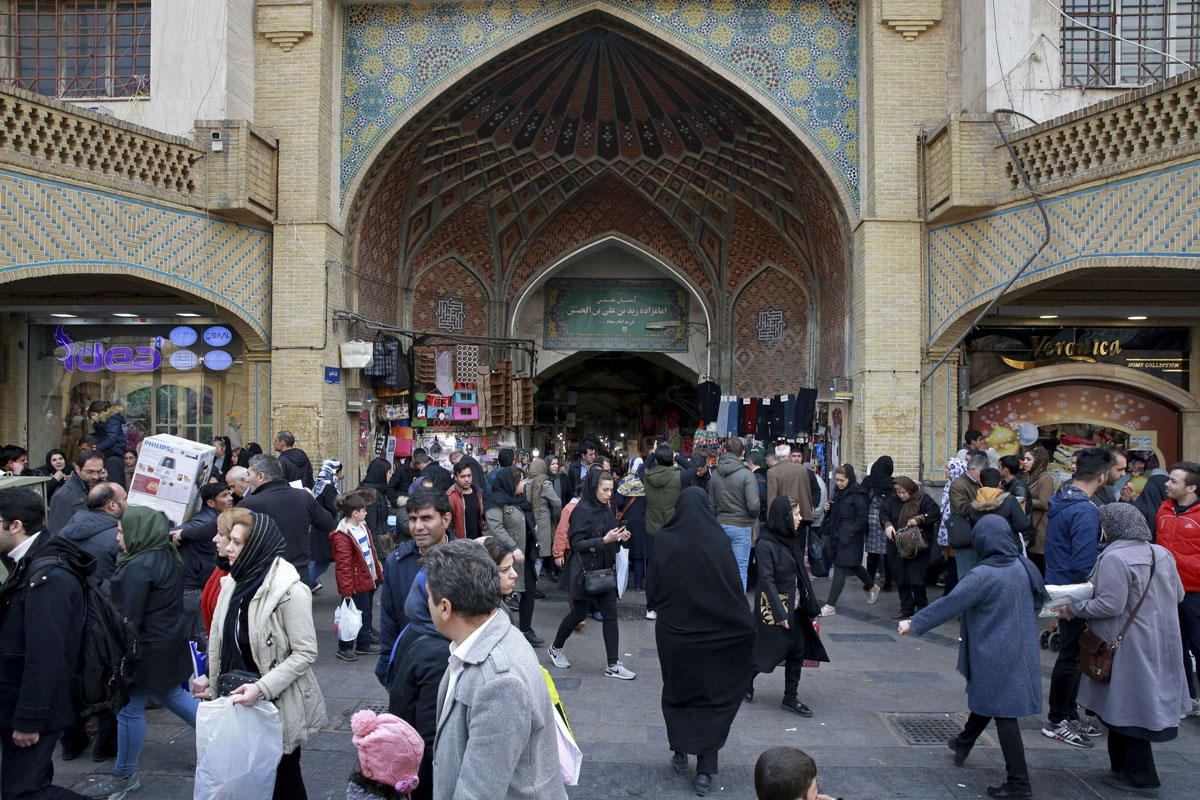Indexes reveal Iran has one of the most ‘miserable’ economies in the world
Tehran’s debilitating financial decline is taking an extreme toll on Iran’s economic health and increasing the population’s misery, several economic indexes indicate.
“Misery indexes,” which measure the quality of a country’s economic well-being, place Iran in the unenviable position of being among the most “miserable” economies in the world based on key fiscal indicators. A misery index produced in Iran and several external indexes demonstrate how Tehran’s bruised economy is hitting citizens in the pocketbook.
Punishing US sanctions on Tehran that were renewed in 2018 and increased this year with additional export restrictions and financial targets on leadership are leading factors in Iran’s economic crisis. Recent calculations by the Statistical Centre of Iran (SCI) indicate the quality of the country’s economic health was twice as bad in the winter of 2018 as it was a year before, a sign of the ramifications of the US sanctions. Two other indexes put Iran in the top five of most miserable economies globally.
A misery index is an informal barometer of a country’s economy, typically calculated by adding the nation’s rates of inflation and unemployment. It was introduced in the 1970s by an economic adviser to former US President Lyndon Johnson and is considered a measure of the socio-economic conditions impacting the country’s average citizen.
In its analysis, the SCI — Iran’s official statistical data gatherer — said that the country’s misery index was at 39% in the winter of 2018, up from 19.4% the previous winter.
The SCI reported that Iran’s unemployment rate was 12.1% and the rate of inflation climbed to 26.9% this past winter. The statistical agency also revealed that Iran’s inflation rate for the 12-month period that ended on June 21 stood at 37.6%. The SCI said the Gulf nation’s economy contracted 4.9% in the Iranian calendar year that ended March 20, pushing Tehran further into recession.
The International Monetary Fund (IMF) in April projected that Iran’s economy would shrink for a second year in a row while inflation could reach 40% or higher in 2019, thanks to reinforced US sanctions targeting crude exports — the Iranian regime’s chief source of revenue.
The IMF estimated an annual average inflation rate of 31.2% for Iran in 2018. It noted that Tehran’s economy contracted 3.9% in 2018 — following growth of 3.8% in 2017 — and would likely shrink 6% this year with 0.2% growth expected in 2020. The fund calculated that Iran’s unemployment rate was 13.9% in 2018, with the rate predicted to rise to 15.4% this year and 16.1% in 2020.
In his 2018 annual misery index, US economist Steve Hanke positioned Iran as the third most miserable economy in his index of 95 countries. Hanke credited Tehran’s leap from its 11th place ranking in his 2017 index with a score of 34.6 to the third spot in 2018 with a score of 79.7 to the country’s plunging rial, which has contributed to the spike in the rate of inflation over the last year.
The rial reached a historic low in September, trading at 190,000 to the US dollar, though it has since recovered and recently traded at 118,000 to the dollar.
Hanke’s index is a variation on the standard misery index — taking the sum of unemployment, inflation and bank lending rates minus the percentage change in real GDP per capita. He said: “In the sphere of economics, misery tends to flow from high inflation, steep borrowing costs and unemployment. The most sure-fire way to mitigate that misery is economic growth.”
Not surprisingly, Hanke’s most miserable economy in 2018 for the fourth consecutive year was Venezuela, with a score of 1,746,439 — a reflection of a high jobless rate and hyperinflation.
Hanke’s 2018 misery index shines a spotlight on how healthy the economies of some of Iran’s neighbours are faring: Not far behind Iran’s third position is Turkey, in fifth place with an index score of 53.3. Egypt with a score of 36.8 is ranked ninth most miserable economy, while Jordan’s score of 30.9 puts it in 12th position. Iran’s regional nemesis Saudi Arabia rated an index score of 23.5, the 18th most miserable economy on the list.
An economics research group, FocusEconomics, has put out its 2019 misery index, placing Iran fourth behind Argentina, Zimbabwe and Venezuela, noting that for Tehran, “economic sanctions from the US continue to fuel inflation.”
With the value of the rial having plunged as much as 60% over the past year and the cost of food and medicine climbing 40%-60%, the average Iranian citizen would be hard-pressed to disagree that his country has one of the most miserable economies in the world.
Jareer Elass is a Washington-based energy analyst, with 25 years of industry experience and a particular focus on the Arabian Gulf producers and OPEC.
This article was originally published in The Arab Weekly.




